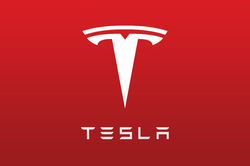
Companies like Ford and GM are actually wholesalers who sell their vehicles to a middleman, the dealer. As such, the selling cost compared to the cost of the material, labor, and overhead is going to be lower. If GM was to fire their dealers and take on the cost of selling their vehicles directly to customers they could probably double their gross margins overnight but be in a worse situation.
Tesla has more of a boutique business model in which they carry the weight of the entire selling process. So the selling price has to cover the equivalent of all the dealership network. It doesn’t necessarily mean that Tesla is any more profitable. It's like comparing the price of a tomato right off the farm to the price of a tomato at the grocery store. Yeah, the grocery store charges more but they aren’t necessarily making a larger profit than the farmer.
Mistake #2 – Gross vs Net Profit
The modifier “gross” in gross profit is there for a reason. It means that any costs beyond manufacturing are not included.
I mentioned earlier that you can’t compare Tesla’s gross margin because they are structured differently and carry the equivalent of the dealer network on their backs. But not only that, they also carry the equivalent of a nationwide gas station industry too. These costs are necessary to sell the Model S and any internal cost models that Tesla financial analysts use to price the Model S will have these factored into the operating profit. The true profitability of the Model S is only known to insiders at Tesla.
The Importance of Selling Costs Illustrated
Imagine that you and your frenemy both start a separate business knitting sweaters and you each sell them for $20 a piece. Now say that your frenemy lands one customer, Walmart. She can ship her sweaters to Walmart all in one box and it’s easy. Now say, unlike your frenemy, that you decide to sell directly to your customers and personally deliver each sweater by getting into your car and driving it to their front door. You both have the exact same gross margin but one of you is going bankrupt because your selling costs are too high. Selling costs are not included in gross margin but are no less important.
You’d think my example of personally delivering each sweater to a customer’s front door is extreme but I’d counter that an automaker deciding to carry their own dealer and refueling network is equally extreme. That’s why they're bleeding cash…every quarter.
Tesla's cost of delivery and customer support are not reflected in gross margin. Also, what happens to all those leased vehicles that Tesla gets back? If those expensive batteries have to be replaced it’s a huge expense not reflected in gross margin but specific to the Model S. Any loss on returned leases are absorbed to the Model S product line income statement below gross margin.
Conclusion
Tesla apologists need to stop saying that Tesla is making a healthy profit on the Model S because:
A. No one really knows
B. If they were, Tesla wouldn’t be burning through cash faster than a Suburban drinks gas.
I don’t think the operating margin on the Tesla is anywhere near what it needs to be in order to “fund other projects”. When I start attaching price tags to everything Tesla has to pay for below gross margin I suspect that the Model S is barely break-even.


 RSS Feed
RSS Feed